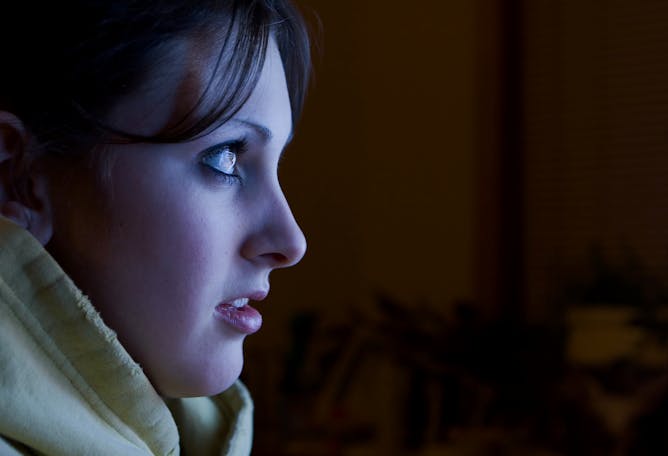
It’s impossible to conduct truly causal research on media consumption and suicide.
Stephen Mcsweeny/Shutterstock.com
Emily Lund, University of Alabama; Michael R. Nadorff, Mississippi State University
Over the past decade, more teens have attempted suicide. The trend has vexed researchers, but it's that much more difficult to determine whether a fictional TV show has had any role.
|
|
|
Health + Medicine
|
-
Bill Sullivan, Indiana University
Fat-shaming is as ineffective as it is cruel. The bullying tactic also ignores the biological factors underlying obesity, which are not always under a person's control.
-
Frank Scannapieco, University at Buffalo, The State University of New York
Lack of good toothbrushing and dental care in nursing homes is a serious problem that will only get worse as more boomers enter such places. Here's why it's time to think about it.
|
|
|
|
Politics + Society
|
-
Joshua J. Dyck, University of Massachusetts Lowell; Edward L. Lascher, Jr., California State University, Sacramento
Citizens voting directly on policy seems like a good idea. But that led to the Brexit mess in the UK. In the US, two scholars say direct democracy deepens distrust of politics and government.
-
Orestes 'Pat' Hastings, Colorado State University; Daniel Schneider, University of California, Berkeley
Single parents and unmarried parents who live together spend less on their children than married parents.
-
Einat Gedalya-Lavy, Newcastle University
As Israelis head to the polls for the second time in 2019, what role will gender play in the vote?
|
|
|
|
From our International Editions
|
-
Simon Keegan-Phipps, University of Sheffield
Land of Hope and Glory seems somehow inappropriate given the current state of British politics.
-
Katie Lebel, Ryerson University; Ann Pegoraro, Laurentian University
Bianca Andreescu's success provides an example of how to cover women’s sport and promote the athletic achievement of female athletes with hype and enthusiasm.
-
Kassia Beetham, Australian Catholic University
It's normal for expectant mums to worry about how their activities might affect their baby's health. But when it comes to vigorous exercise, the evidence shows there's nothing to worry about.
|
|
Today’s chart |
-
  |
Christian Weller
University of Massachusetts Boston
|
| |